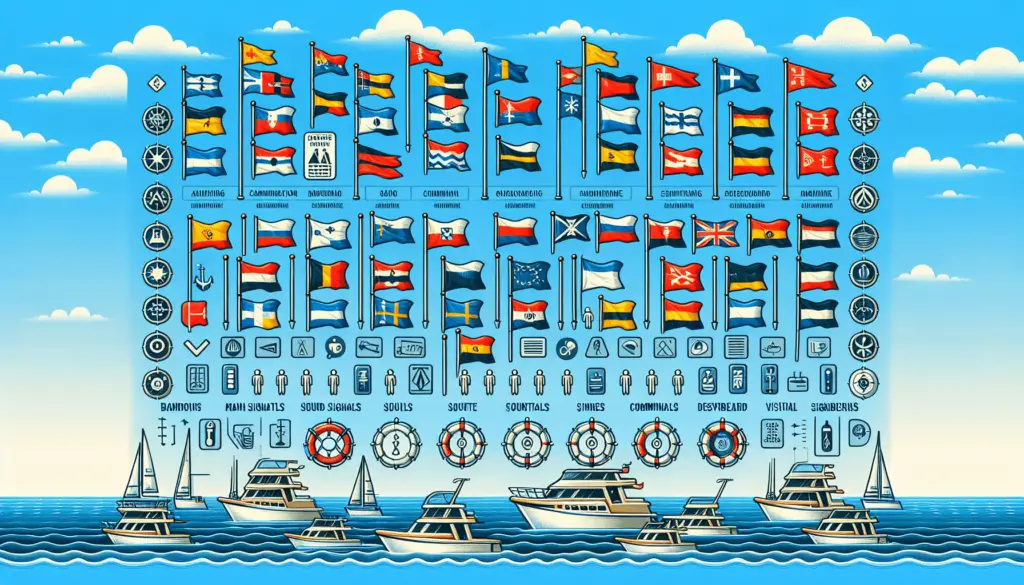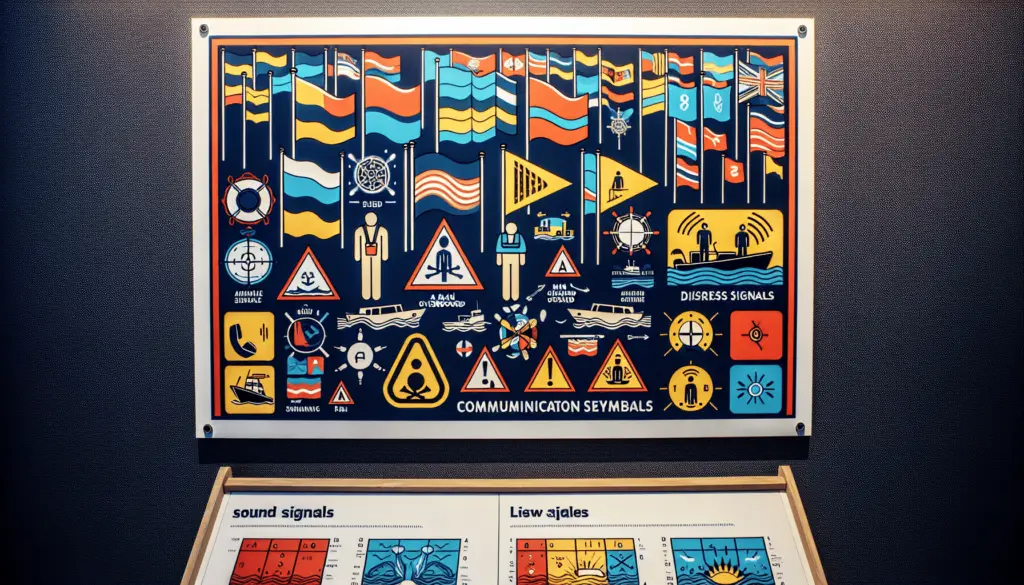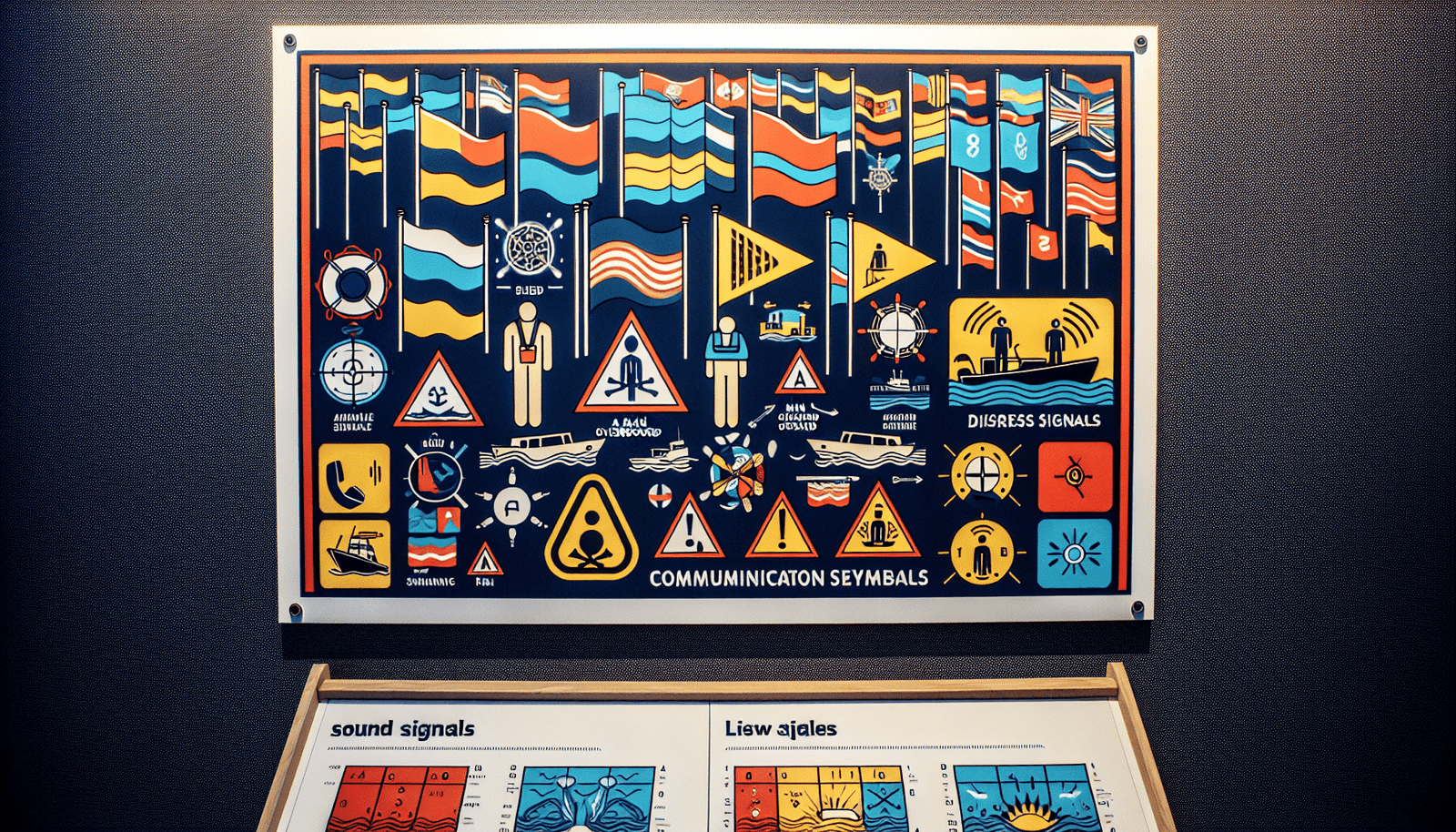Imagine yourself on the azure waters, steering your boat under the open sky. You’re winding along serene, vast expanses when suddenly a nearby vessel seems to be blaring out an unheard language. It’s a world far from solid land, with its own language – a language spoken in flags, blasts, and finely tuned radio frequencies. Armor yourself with knowledge that prevents disastrous miscommunications and lets you be a part of this unique maritime conversation. “Essential Communication Signals For Boaters” is your guide to understanding these vital signals that cut across still and stormy seas alike. Prepare to anchor into language of the sea and chart your course into fluent nautical communication.
Understanding Communication Signals
In the art of sailing, signals are the vocabulary you’ll use to weave conversations with vessels near and far. They are like a coded language or a secret handshake that helps create a sense of community and safety amongst seafarers. Be it day or night, calm or storm, understanding and correctly interpreting these signals are of utmost importance.
The importance of communication signals
Communication signals play a critical role in maritime safety and voyage navigation. Through these signals, you can relay vital information to your fellow seafarers, alert them of your intentions, and even ask for help during emergencies. By understanding these signals, you not only ensure your safety, but also contribute towards the safety of others.
Various types of communication signals used in boating
Boating communication signals are diverse and depend on the circumstance and need of the hour. There are visual signals such as flags, lights, and hand signals. Then there are auditory signals like horns, bells, and whistles. More sophisticated signals include radio communication and Morse code. Each has a special use and significance in the maritime world.
Basic principles governing boating communication signals
Boating communication signals are governed by international maritime regulations to ensure standardization across the globe. These principles may vary slightly depending on location, but the basic idea is clear communication of intent, proximity, and need for assistance. Always remember, error in understanding or relaying a message can lead to catastrophic results.
Visual Signals
Human eyes are adept at sensing and interpreting visual signals, making them an efficient mode of maritime communication.
Use of flags in boating communication
Flags, with their vibrant colors and distinct patterns, have been used in boating communication since antiquity. They hold an essential place in the maritime world, symbolizing everything from an individual nation to the presence of a diver underwater. Knowing these flags strengthens your fluency in the maritime language.
Hand and arm signals for boaters
Hand and arm signals are a quick and effective way for close proximity communication. They are the maritime version of charades. Whether you want to indicate that you are turning starboard or want to convey a diver’s distress, your limbs can facilitate that communication.
Flares, fireworks, and smoke signals
Flares, fireworks, and smoke signals are the maritime S.O.S., visible from a distance. While flares and fireworks demand immediate attention with their brilliant light, smoke signals speak in a silent but articulate manner, carrying your message across miles.
Understanding light signals
As day turns into night, flags and hand signals lose their effectiveness. This is when light signals take the stage. Variations in color, flashing rates, and division into long and short signals form a morse-like code, communicating everything from a vessel’s presence to its intent.

Auditory Signals
When visibility is limited, or when visual signals don’t suffice, auditory signals come to the rescue.
Using horns, bells, and whistles
Horns, bells, and whistles echo your presence across water bodies. The number and rhythm of these sounds convey different messages, be it alerting another vessel of your presence in fog or signaling your intent to overtake another vessel.
Morse code signals for boating
Morse code isn’t just relevant to spy novels. In maritime communication, Morse code is used to convey complex messages succinctly. Familiarizing yourself with the ‘dots’ and ‘dashes’ can add a level of sophistication to your communication arsenal.
Distress calls and emergency sirens
Auditory distress signals are crucial during emergencies. These can be a vessel’s blaring siren or a coded distress call like the universally known SOS. Being able to send and recognize such signals can mean the difference between life and death.
Radio Communication
Radio communication is the technological advancement that threads all vessels across the ocean into a single network.
Introduction to marine VHF radio
Marine VHF radio is the lifeline connecting you with maritime authorities and fellow sailors. More reliable than cell signals, it enables you to request aid, receive weather updates, and notify your course and speed to nearby vessels.
Importance of marine radio etiquette
With great power, comes great responsibility. The marine VHF is a shared frequency, making it crucial to maintain decorum and follow certain protocols. Unnecessary chatter is discouraged, and specific phrases are used to communicate clearly and effectively.
Commonly used radio communication phrases
Phases like “Roger” denoting receipt of message or “Mayday” signaling distress are a part of every sailor’s lexicon. Understanding these phrases ensures that you are on the same wavelength with your fellow mariners and can interpret and convey messages effectively.

Distress Signals in Boating
Among all signals, distress signals hold a special status as they act as a plea for assistance.
Recognizing distress signals
Different vessels use different types of distress signals, ranging from auditory signals like SOS to visual ones like red flares. Rapidly blinking lights or flags flown upside-down also convey distress. Learning to recognize these signs can help you save lives.
How to signal for help in emergency situations
From triggering your vessel’s siren and flashing your lights in a particular pattern to deploying flares or dye markers, there are multiple ways to alert others of your predicament. Your ability to act swiftly and use these methods effectively can mean the difference between despair and rescue.
Responding to distress signals
Identifying a distress signal is only half the battle. How you respond is equally important. Be it calling for help on your VHF radio or assisting a vessel in need while ensuring your own safety, understanding the protocol is crucial.
International Code of Signals (ICS)
The ICS is a comprehensive system of signals that allows vessels of different nationalities to understand each other clearly.
Overview of ICS
The ICS is a language of the seas, a language that is universally understood. It uses flags, Morse code, and sound signals to denote alphabets and numbers. Every letter and number signify different messages, from navigational instructions to weather warnings.
Understanding Alfa, Bravo, Charlie codes
The code system uses phonetic alphabets – Alfa, Bravo, Charlie, and so on. Each letter has a specific and unique meaning. For instance, ‘Alfa’ signifies ‘I have a diver down; keep clear,’ while ‘Bravo’ means ‘I am loading or discharging dangerous cargo.’
Interpreting digits and substitutes in ICS
The numbers in ICS aren’t just digits – they’re carriers of specific messages. For example, the number ‘1’ means ‘I am altering my course to starboard.’ Learning to read this language is like solving a secret code, only more exciting and useful!
Diving Signals
Just as the surface world has its language, so does the underwater world.
Understanding diving flag signals
Dive flag signals are crucial to maintaining safety during underwater exploration. These flags indicate the presence of divers, alerting nearby vessels and demanding caution.
Hand and arm signals for divers
Underwater, where the human voice is silenced, hand and arm signals reign supreme. These signals facilitate efficient communication between divers, keeping them safe and ensuring a smooth diving experience.
Using lights and sound signals underwater
Underwater sound signals and light signals often serve as distress alerts. More importantly, these signals guide divers through the darkness and alert them to danger.
Protocol for Un-attended Vessels
An unattended vessel can be a puzzle – a task to understand its intent.
Protocol for communicating with un-attended vessels
Communicating with unmanned vessels requires a keen observation of signals. You’ll look for light signals or flags that may hint at its intent and then respond accordingly.
Using signal lights to convey intentions
Just as you glean information from an unattended vessel, you could use signal lights on your own one to convey your intentions. Whether you’re anchored, undergoing diving operations, or need assistance, your signal lights will reveal your status.
How to send messages via radio
Just like humans, vessels can talk too! They use radio signals to communicate their status, echo their presence, and convey their intent.
Lock and Dam Signals
Approaching a lock or dam can be challenging. Just like the roads have traffic signs, these structures have signals to guide you.
Signals for approaching a lock or dam
The signals displayed near a lock or dam indicate its operational status. Red indicates stop, green for go, and amber or flashing red indicates expect a delay or stoppage. Observe and abide by these signals to ensure a smooth and safe navigation.
Safety tips for navigating locks and dams
Safety near locks and dams involves more than just adhering to signals. You need to account for turbulent waters and changing water levels. Radio communication with lock operators provides vital information and ensures safe passage.
Responding to lock and dam signals
Reacting correctly to lock and dam signals can prevent mishaps. Whether it’s slowing down for a red light, awaiting guidance for passing, or calling for directions on your VHF radio, your response ensures your own safety and the safety of others.
Communication During Poor Weather Conditions
Weather can be a mariner’s friend and foe depending on its mood. It can create spectacular sunsets and also cause visibility issues impacting your communication.
Challenges posed by poor visibility, high winds, or turbulent waters
Poor visibility, high winds, or turbulent waters can dramatically affect your ability to send and receive signals. You may have trouble distinguishing flags, hearing sounds, or perceiving light signals in severe weather conditions.
Special signals for inclement weather
During incense weather, it is crucial to use signals that are hard to miss. Bright flares, loud auditory signals, intense light signals, or urgent radio messages are typically used during poor weather conditions.
Using radio communication during bad weather
Radio communication is particularly useful during bad weather, as it is unaffected by visual conditions. Weather updates can be relayed through the radio, helping you anticipate changes and navigate safely.
Boating signals are crucial in the sailing community, allowing for clear communication, facilitating help during emergencies, and ensuring that you safely reach your destination. Mastering these signals equips you for any journey on the water and affirms your place as an experienced and responsible sailor. Happy sailing!

